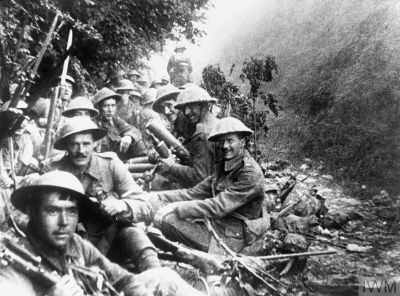Annotation:Taking of Beaumont Hamel: Difference between revisions
No edit summary |
No edit summary |
||
| Line 1: | Line 1: | ||
{{TuneAnnotation | {{TuneAnnotation | ||
|f_annotation='''TAKING OF BEAUMONT HAMEL.''' Scottish, Pipe March (2/4 time). A Major. Standard tuning (fiddle). AABB’CCDD’. Composed by John MacClellan, D.S.M., a poet and painter from Dunoon, Scotland, who was formerly Pipe‑Major of the 8th Battalion, Argyle and Sutherland Highlanders during World War I. The engagement at Beaumont Hamel took place on the opening day of the Battle of the Somme, in 1916, when British and Canadian forces (including the 1st Lancashire Fusilers, below) attacked following the detonation of a huge mine that was laid in a tunnel beneath the German lines. It was not successful, and the attacks were beaten back with huge loss of life. One regiment sustained 684 casualties out of the 752 men who attacked. The fortified village was finally taken by the Highland Division in bloody combat over several days in November, at the end of the battle. | |f_annotation=[[File:Somme4.jpg|400px|right|thumb|Photo by Geoffry Malins. 1st Lancashire Fusilers poised for the attack on Beaumont Hamel, World War I.]]'''TAKING OF BEAUMONT HAMEL.''' Scottish, Pipe March (2/4 time). A Major. Standard tuning (fiddle). AABB’CCDD’. Composed by John MacClellan, D.S.M., a poet and painter from Dunoon, Scotland, who was formerly Pipe‑Major of the 8th Battalion, Argyle and Sutherland Highlanders during World War I. The engagement at Beaumont Hamel took place on the opening day of the Battle of the Somme, in 1916, when British and Canadian forces (including the 1st Lancashire Fusilers, below) attacked following the detonation of a huge mine that was laid in a tunnel beneath the German lines. It was not successful, and the attacks were beaten back with huge loss of life. One regiment sustained 684 casualties out of the 752 men who attacked. The fortified village was finally taken by the Highland Division in bloody combat over several days in November, at the end of the battle. | ||
|f_printed_sources=Martin ('''Ceol na Fidhle, vol. 3'''), 1988; p. 27. Martin ('''Ceol na Fidhle, vol. 4'''), 1991; p. 31. | |f_printed_sources=Martin ('''Ceol na Fidhle, vol. 3'''), 1988; p. 27. Martin ('''Ceol na Fidhle, vol. 4'''), 1991; p. 31. | ||
|f_recorded_sources=Wildcat Records WILDCD 101, Ronan Martin – “Ronan Martin” (2008. Learned from box player Ken ‘Cam’ MacKay). | |f_recorded_sources=Wildcat Records WILDCD 101, Ronan Martin – “Ronan Martin” (2008. Learned from box player Ken ‘Cam’ MacKay). | ||
}} | }} | ||
Revision as of 22:21, 16 May 2022
X:1 T:Taking of Beaumont Hamel, The C:John McLellan, Dunoon M:C| L:1/16 R:March B:Cowal Highland Gathering – “Third Cowal Collection of B:Highland Bagpipe Music (c. 1920, p. 41) Z:AK/Fiddler’s Companion K:Amix A3B|ce3e3f c2BA|cA3ce3 f3ga3f|e2AB ce3f3e|c2B B2A>B| ce3e3f c2BA|cA3ce3 f3ga3f|e2AB ce3f3e|c2A2 AA:| |:f3g|a2cd e2AB|cA3ce3 f3ga3f|e2AB ce3f3e|c2B2 B2|1 f>g| a2cd e2AB|cA3ce3 f3ga3f|e2AB ce3f3e|c2A2 AA:| |2 A3B|ce3e3f c2BA|cA3ce3 f3ga3f|e2AB ce3f3e|c2A2 AA|| A3B|ce3e3f c3BcA3|(3AA3A3ce3 f3ga3f|e3cA3B ce3f3e|c2B2 B2AB| ce3e3f c3BcA3|(3AA2A3cc3 f3ga3f|e3cA3B ce3f3e|c2A2 AA:| |:f3g|a3ece3 f3ece3|A3Bce3 fa3e3f|a3cA3B ce3f3e|c2B B2|1 fg| A3ece3 f3ece3|A3Bce3 f3ga3f|e3cA3B ce3f3e|c2A AA:| |2 A3B ce3f3e c3BcA3|(3AAAce3 f3ga3f|e3cA3B ce3f3e|c2A2 AA||


